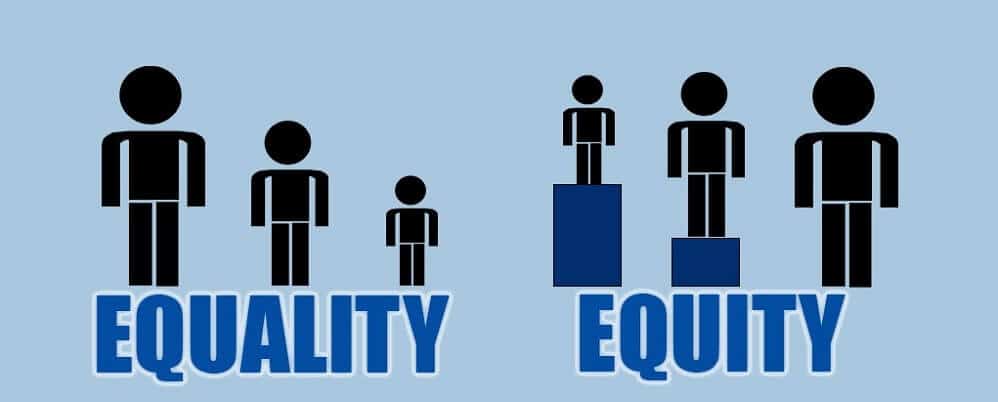An even playing field at this point in the game, after the generational head start has been solidified, will never achieve elimination of these gaps on its own.
For our second blog installment during Black History Month, we take a look at a compelling exercise that examines equality in light of historic and systemic inequality. The concept comes from a high school classroom exercise designed to illustrate the long-term effects of economic injustice. The exercise is detailed in full on the website Tolerance.org.
Homeownership was just one of the many avenues to wealth creation that were closed to households of color for generations. Today, despite the fact that access to wealth creation opportunities are equally accessible to all (at least on paper), white people remain, on average, much wealthier than people of color. If everyone is now on ‘an even playing field,’ why is this the case? What could be wrong with an even playing field? Isn’t that what the United States is built on?
The exercise designed to illustrate the reality behind this situation is called The Real Monopoly: America’s Wealth Divide. It’s basically the classic game of Monopoly with supplemental rules imposed to mimic historic inequality. The supplemental rules are phased out over the first seven rounds of the game, and by the eight round, everyone has technical access to everything everyone else has access to.
Here are the supplemental rules:
- Group 1 – Members of this group are allowed to play by the regular rules.
- Group 2 – Members of this group also are allowed to play by the regular rules. However, at any point during the first five rounds, any member of Group 1 can demand all of a Group 2 member’s property and all but $200 of their cash. Each member of Group 1 can make such a demand only once.
- Group 3 – Members of this group start the game with only $200 (rather than $1,500). For the first five rounds, these players can have no more than $200 at the end of their turn – any additional funds must be surrendered to be distributed evenly among the members of Group 1. In addition, members of Group 3 are prohibited from buying any property during the first five rounds, and can buy property only between the Go square and the Jail square during rounds six and seven.
As you can easily see, Group 1 has a tremendous opportunity to amass a head-start. Group 2 is at a significant disadvantage when compared to members of Group 1 that are paying attention. And Group 3 is at a major disadvantage whether anyone is paying attention or not. By the end of seven rounds of play, Group 1’s head start is so great as to make it impossible for anyone from Group 3 to ever catch up without additional help.
The policies that brought about the creation of the homeownership gap between white households and households of color, and indeed the complete expanse of the wealth gap itself, were ingrained, systemic and deliberate. It has been argued here and by many others working in this space that policies intended to reduce and eliminate these gaps need to be just as ingrained, systemic and deliberate if we want them to succeed. An even playing field at this point in the game, after the generational head start has been solidified, will never achieve elimination of these gaps on its own.
For information on the Homeownership Opportunity Alliance, a public outreach and resource accessibility campaign convened by the Minnesota Homeownership Center and Minnesota Housing Finance Agency, go to HomeownershipOpportunityAlliance.org.
